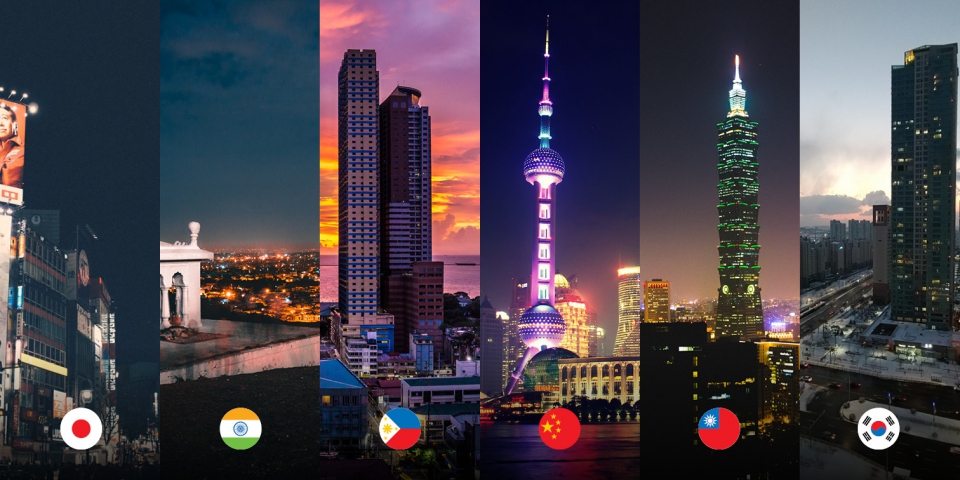In this instalment of our GNSS in Asia series, we look at how the close cooperation between the GNSS.asia China team and China’s LBS association is resulting in big opportunities for EU companies.
With an explosive annual growth rate forecast at 46% up to 2020, the Chinese Location-Based Services (LBS) market is a huge and relatively accessible market for European players. Although the gaming and marketing segments are the most promising for cooperating with Chinese partners, chipset manufacturers like ST and Bosch are also seeing success.
2020, the Chinese Location-Based Services (LBS) market is a huge and relatively accessible market for European players. Although the gaming and marketing segments are the most promising for cooperating with Chinese partners, chipset manufacturers like ST and Bosch are also seeing success.
More so, since 2016 bike-sharing has boomed in China, which thrives on the use of GNSS-provided positioning and thus is positioned as a key opportunity for EU players. As reported by Forbes in a July 2017 article, Beijing-based bike-sharing start-up ofo, recently received $700 million in financing to expand its network of inexpensive and environmentally friendly bike shares that rely on mobile apps for renting and GPS for tracking. Likewise, Mobike, a close competitor, drew $600 million in financing in June, bringing its total for the year up to $1 billion.
Spearheading the development of China’s LBS market is the GNSS and LBS Association of China (GLAC). Founded in 1995, GLAC is a professional non-profit organisation focused on GNSS applications and LBS services at the national level. The association boasts more than 2,000 members, including universities, research institutes, enterprises, manufacturers and geospatial data providers – to name only a few.
GLAC works in close partnership with the GNSS.asia China team, looking for opportunities to bring LBS players from Europe and China together. Specifically, the partnership is responsible for organising a range of events targeting the GNSS community in China and Europe and working to raise awareness about Europe’s GNSS programmes (EGNOS and Galileo) throughout GLAC’s extensive industry network. The GSA-funded GNSS.asia project is dedicated to developing and implementing GNSS industrial cooperation between European and Asia-Pacific GNSS industries, with a focus on the downstream market.
“Over the past several years, we have taken great strides to capitalise on GLAC’s extensive industry network as a means of facilitating cooperation agreements between Asian and European companies,” says Davof Xu, EU SME Advocacy and Working Group Coordinator at the EU Chamber of Commerce in China.
Spreading the word on E-GNSS
To promote E-GNSS and industrial cooperation to a broader extent across China, GNSS.asia, along with GLAC, have been ‘testing the waters’ for interest in China’s top GNSS cities. For example, last year they organised the International Forum on GNSS & LBS and the 11th China Satellite Navigation Operations Conference in Shenzhen, which welcomed over 50 participants. The two also partnered to host the International Forum on GNSS Applications – GNSS Connects the World at the 5th Annual GLAC Conference in Chengdu.
“These events were successful in that they allowed us to identify possible local partners and stakeholders that we need to facilitate concrete cooperation in the regions,” says Xu. “What’s very encouraging is that many of the attendees were open to the possibility of industrial cooperation between Europe and China, especially as it pertains to applications.”
GNSS.asia also attended the Beidou + Space-based Information Application Summit, which was organised by GLAC and held in Harbin.
Looking ahead
To continue to build on this momentum between China and the EU, the GNSS.asia China team plans to expand its cooperation with both GLAC and GCE. They are also helping to organise GLAC’s EU tour and facilitate the creation of concrete industrial partnerships. In April 2017, for example, a mutual meeting between GLAC and the GNSS Centre of Excellence (GCE) was held in Prague with around 20 participants. “Here, both sides agreed to further strengthen cooperation and exchanges on creating new transportation-focused applications, especially for the ITS, Road and Aviation sectors,” says Xu.
The GNSS.asia China team is also busy coordinating opportunities for industrial exchanges and matchmaking through GLAC’s Action Plan of Hundreds of Cities, Hundreds of Applications. The Plan aims to promote GNSS technology and applications, as well as the development of satellite navigation and location services industries, through the integration of regional and industry location networks.
“The Plan promotes GNSS applications across multiple industries, field and cities,” explains Xu. “Of particular interest to European companies is the Plan’s focus on vehicle navigation and positioning related services, along with applications pertaining to the urban construction and management, mapping, and maritime sectors.”
Multi-constellation goes mainstream
With the launch Galileo Initial Services, GNSS.asia is closely following its adoption among GLAC’s networks. According to Xu, Chinese chipset companies like CEC Huada Electronical Design Co. Ltd, Unicore Communications Inc., and Mengxin Technology have all developed Galileo-enabled chipsets. Furthermore, some Chinese mobile phone manufactures, including Huawei, have started using Galileo-enabled chipsets within their devices.
“As multi-constellation is now the mainstream, Chinese companies are becoming increasingly interested in including Galileo into their applications and devices in order to provide better accuracy for their customers,” says Xu. He adds that this is especially true as Chinese companies become more internationalised and expand into overseas markets. “It is not difficult to find examples of Chinese GNSS companies acquiring international companies,” adds Xu. “For instance, Unistrong acquired Hemisphere in 2015, and the technology has been well promoted in the Chinese market since then.”
Media note: This feature can be republished without charge provided the European GNSS Agency (GSA) is acknowledged as the source at the top or the bottom of the story. You must request permission before you use any of the photographs on the site. If you republish, we would be grateful if you could link back to the GSA website (http://www.gsa.europa.eu).